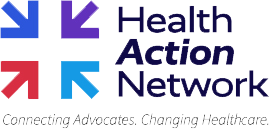A relatively small number of drugs are found to drive up Medicare drug spending; stakeholders urge Congress to repeal the harmful rebate rule; payers operationalize resources for the ongoing special enrollment period on the exchanges; and, our definition of social determinants of health expands to better account for drivers of poor health outcomes.
We encourage you to stay involved as implementation efforts surrounding healthcare reform progress. Visit the Health Action Network and be sure to let us know what’s on your mind.
Week in Review
Medicare Rx Spending: As lawmakers once again turn their focus to addressing out-of-control drug prices, a new analysis provides further proof of just how pressing the issue has become. According to research released by the Kaiser Family Foundation earlier this week, a relatively small number of drugs now make up the majority of Medicare drug spending. Specifically, researchers examined the top drugs for both Medicare Part D and Part B, the costliest of which are used to treat cancer, diabetes, and arthritis. In Part D, the top-250 selling drugs with only one manufacturer and no generic competition accounted for 60 percent of all spending in that program, despite only making up 7 percent of all covered drugs (3500 products). The disproportionate balance is even more pronounced in Part B, where the top-50 selling drugs accounted for 80 percent of the total spend in the program and only 8.5 percent of the total covered drugs.
Rebate Rule Repeal: With that in mind, stakeholders have identified at least one important thing that lawmakers can do to immediately protect seniors from the threat of further rising drug prices – namely, the elimination of the costly “rebate rule”. That rule seeks to eliminate the rebates that pharmacy benefit managers (PBMs) extract in their negotiations with pharmaceutical companies and pass along as savings to customers, employers, and government programs. However, prohibiting rebates essentially removes the only check that PBMs have on drugmakers’ pricing power. As a result, the Centers for Medicare & Medicaid Services’ (CMS) own actuaries estimate that premiums for seniors enrolled in the Medicare Part D prescription drug program will increase by as much as 25 percent, while the Congressional Budget Office (CBO) projects an additional $170 billion in costs for taxpayers. Stakeholders are urging lawmakers to repeal the rebate rule, which has already been delayed.
SEP Resources: In response to the unfolding coronavirus health crisis, a special enrollment period (SEP) has been opened – and extended – on the Affordable Care Act’s health insurance exchange marketplaces. Understanding the importance of making sure consumers are not just aware of the SEP, but armed with the necessary information to make the enrollment decisions that best suit their needs, America’s Health Insurance Plans (AHIP), the trade group representing the nation’s top insurers, recently packaged together and released a number of consumer-facing resources designed to help people better navigate the SEP and make sense of their options. In addition to fast fact sheets covering the basics of the SEP, AHIP also launched a new website that includes a tax credit decision tree that provides consumers with a visual resource that walks them through their subsidy eligibility.
Health Literacy: The increased focus on social determinants of health (SDoH) speaks to our broader understanding and acceptance of the critical role that non-medical, socio-economic factors play in whole-person health. Already, stakeholders across the healthcare spectrum have made SDoH investments in housing, food security, job training, and transportation. Now, what we’ve come to view as social drivers of health has begun to expand, most recently, with experts calling for that broad definition to include health literacy, which refers to a person’s ability to understand and use health information to make health-related decisions. A growing body of research would seem to back up that argument, showing how low health literacy is linked to poor health outcomes. This has led to additional calls to further expand our focus on SDoH to also include the separation between those who have access to technologies and the digital literacy to apply them to their own healthcare needs from those who don’t, otherwise referred to as the “digital divide”. While there’s a good deal of nuance to the exactness of the digital divide, what’s hard to minimize is the importance of designing better, multimodal patient engagement strategies to combat these inequities.
Spotlight

You can keep up with the latest by following the Health Action Network on Twitter and by liking us on Facebook. And, as always, be sure to let us know if there’s something you’d like to see covered in a future newsletter.
